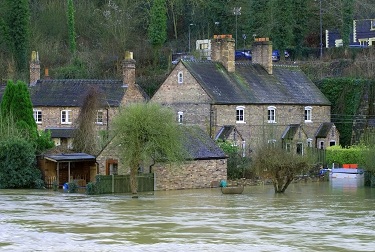Putting the citizen at the centre of flood prevention

Related topics
Environment & climate action Innovation France Italy Netherlands Poland Spain United Kingdom Switzerland Environmentdate: 10/04/2014
Project: WeSenseIT: Citizen Observatory of Water
acronym: WESENSEIT
See also: CORDIS
Contact: Contact
The EU-funded WeSenseIt project was launched in October 2012, with the aim of strengthening Europe’s response to water management and to directly engage with citizens and communities on the front line.
So far the project team has successfully tested the concept of engaging citizens to monitor water levels. And one of the project partners is seeking to market a social media analysis tool developed by the team in 2013.
A citizen’s observatory
When it comes to floods, citizens have often been thought of as mere consumers of information; potential threat warnings would trickle down from authorities to those living in areas at risk. But couldn’t citizens and communities be given a more active role and become part of the solution to better water management?
This is why WeSenseIt is developing the concept of a citizen-based water observatory, where communities form part of a two-way information chain. The advent of mobile phones and social media means that citizens can be fully active in capturing, evaluating and communicating valuable information on water levels, creating cost efficiencies and acting as early warning systems for over-stretched local authorities.
“There are so many rivers that it would be impossible to monitor them all with sensors,” explains project coordinator Fabio Ciravegna from the University of Sheffield in the UK. “Not all necessary information can be captured with sensors. Moreover, cost is a major issue: often the cost of the communication infrastructure to transmit data dwarves the cost of the sensors themselves.”
Citizens – such as volunteer flood wardens in the UK or civil protection volunteers in Italy – can help by taking measurements using new apps currently being developed by the project and sending information and images by phone.
They can also help by reading existing sensors and sending authorities the data via mobile apps. The collected data will be made available through the Global Earth Observation System of Systems (GEOSS).
New technologies and approaches to water management are being tested and validated in three EU countries: the UK, the Netherlands and Italy. “For example, we are developing mobile apps so that flood wardens in the UK can walk along river banks, and take tagged pictures if think there is something of concern,” says Prof Ciravegna. “We have already received hundreds of pictures from Doncaster.”
In Italy, an evaluation involving some 500 volunteers simulating a flood in the city of Vicenza was completed at the end of March 2014. The project has also been asked to provide assistance in supporting the city of Vicenza during the evacuation of some 50 000 people, in order to allow an unexploded World War Two bomb to be diffused.
Sensing business opportunities
WeSenseIt also has a strong focus on creating new economic opportunities, which is why eight small to medium-sized enterprises (SMEs) are involved. One company is already commercialising a tool developed during the summer 2013, just 10 months into the project.
The tool, which carries out large scale social media analysis to help emergency responders during large scale floods, found an application in monitoring large city wide events in England. Events involving over 600 000 citizens were monitored with excellent results, reflecting the breadth of potential applications of this kind.
Overall, the citizen observatory concept will provide solid infrastructure within which SMEs can create and test applications and services at low cost, in a project setting that will give them high visibility. Businesses stand to benefit hugely from being able to apply developed technology to such an important issue.
“The long term impact of this project will be the development of a new way of understanding the environment; that it is something shared by us all,” says Prof Ciravegna. “The real lesson here is that it is not just about monitoring emergencies, when everyone wants to help; monitoring and measuring on a daily basis enables preparation, prevention and understanding. I think, with this project, we are getting there.”
Press Release available here
